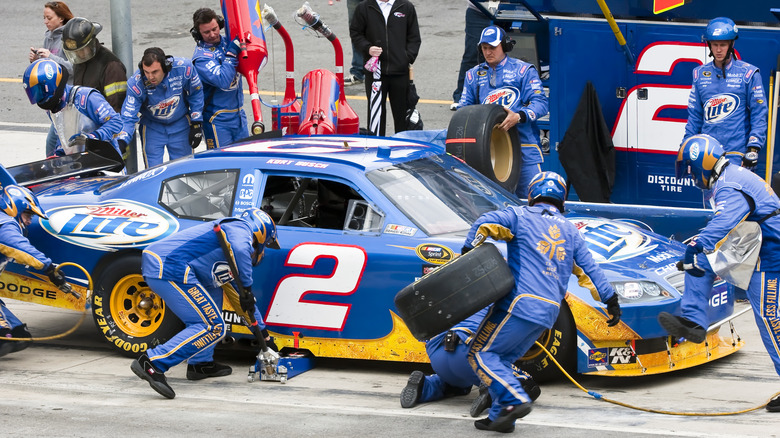
The 2024 NASCAR season was another thriller, certainly helped by the fact that three of the sport's closest finishes ever occurred during the year. That included the very closest: Kyle Larson crossed the finish line a bare 0.001 seconds ahead of Chris Buescher to win the AdventHealth 400 at Kansas Speedway on May 5. (Here's how NASCAR decided a winner.) The same year also saw Ricky Stenhouse Jr. edge past Brad Keselowski to win at Talladega by 0.006 seconds, while the margin of victory in the Ambetter
Health 400 in Atlanta, where Daniel Suárez took home the checkered flag, was 0.003 seconds.
All of which is to say that even though NASCAR races are measured in hundreds of miles, victories can come down to thousandths of a second. And keep in mind that the clock keeps ticking during pit stops. That's why NASCAR relies on specially engineered hydraulic jacks to help speed things up.
They work on the same principles as a typical hydraulic jack, but with a few key differences. For one, they're usually made of a special lightweight aluminum so they're easier to carry over the pit wall and maneuver around the race car. In addition, they have a lower profile to slip quickly beneath the vehicles and can raise the car to tire-changing height with a single pump. As a result, the Joe Gibbs NASCAR team was able to change four tires as part of a record-setting 8.02-second pit stop this year in Charlotte.
Read more: Call Me A Luddite, But These Modern Features Only Seem To Make Cars Worse
How Does A Hydraulic Jack Work?

Okay, first a quick clarification: NASCAR has made a recent rule change that allows the limited use of integrated air-jack systems similar to the ones used by Formula 1, where they helped to pull off a two-second pit stop. For NASCAR, the systems are limited to when a racer gets a flat rear tire while out on the track. In the past, the cars' design meant waiting for a tow truck, causing a major interruption to the action. The new air jacks can lift the car off the flat tire enough inches to let it get back to the pits on its own.
Air jacks, as you might guess, rely on compressed air to raise a car. Hydraulic ones operate by taking advantage of Pascal's Law, which states that when a non-compressible fluid is put in a closed system, the amount of pressure applied at one point changes the pressure the same amount throughout the system.
However, you can multiply the force of the pressure, as happens in a hydraulic jack. Here, the person using the hydraulic jack presses the pump lever to put more pressure on the hydraulic fluid in one small cylinder, which transfers the pressure to another, larger cylinder with hardware to do the lifting. The larger area of the piston in the lifting cylinder makes the key difference.
What Does A NASCAR Jackman Do?

Yes, NASCAR still genders the jackman role in pit stops, although it does seem to be accurate, since all pit-team members involved in carrying hydraulic jacks in NASCAR races appear to be men. That said, there have been women tire changers, like Brehanna Daniels and Dalanda Ouendeno, and schlepping 50-pound NASCAR wheel setups around is no joke. (Speedy pit stop weddings in Vegas? We'll let you make the call.)
They first leap over the pit wall with jack in hand, then dash around to the right side of the car, find the dedicated jack point, and raise the car off the ground with one smooth motion. But they aren't done there. Once the car is lifted, the jackman attaches — or in NASCAR parlance, "hangs" — the right front tire. The next move is to let the car down, grab the jack, and race around to the left side to start over. They again jack up the car and hang a tire, the left rear in this case, before finally clearing the pit area. FYI: Here's what NASCAR does with all those used tires when they're done with them.
Want more like this? Join the Jalopnik newsletter to get the latest auto news sent straight to your inbox...
Read the original article on Jalopnik.











